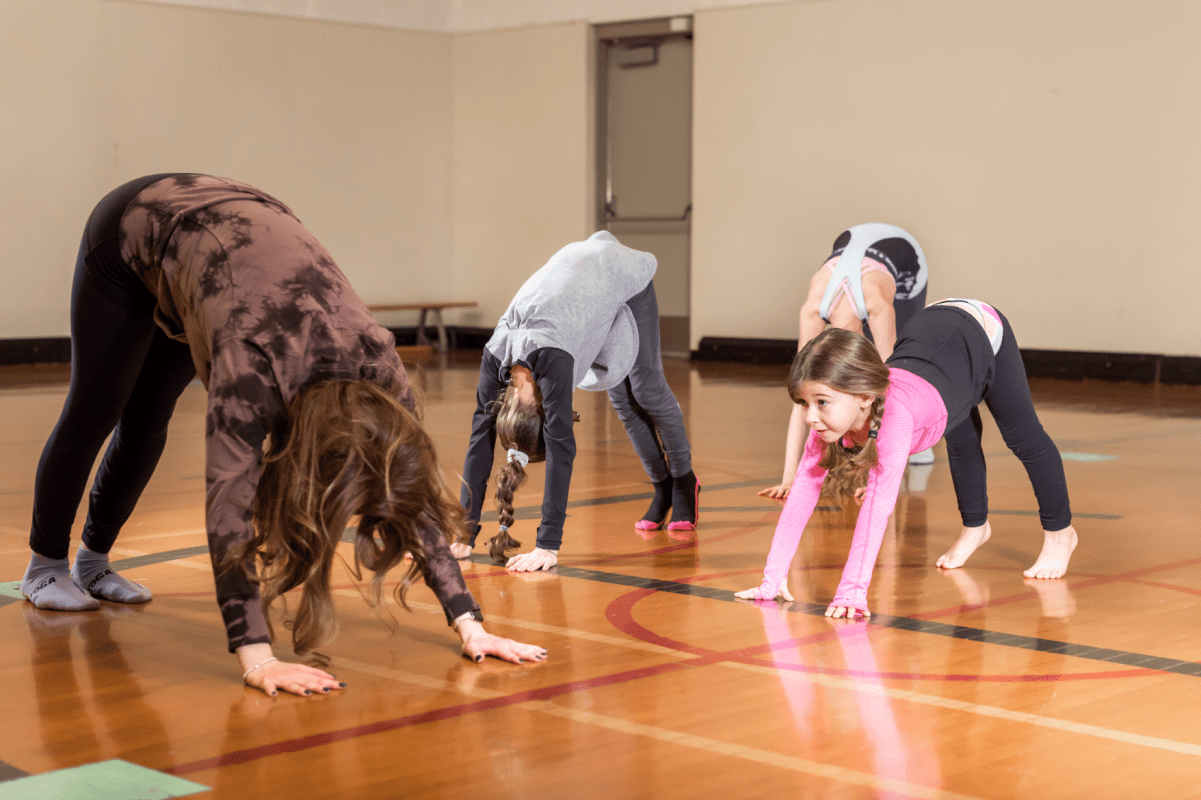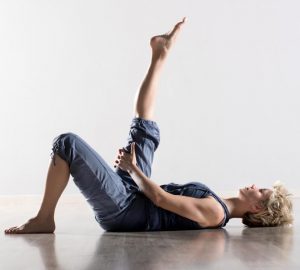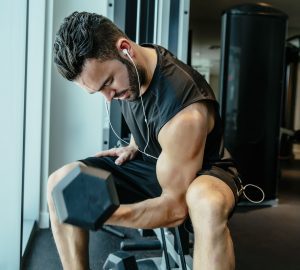Stress and anxiety are two terms that have become a part of everyday vocabulary for children. They are exposed to many different stressors of daily life, all of which vary from school stress all the way to family dynamics. As a grade six teacher, I often hear children complaining of lack of adequate sleep and feelings of extreme fatigue. As if the pressures of growing up weren’t enough, kids are forced to experience all of the demands that await them outside of the classroom as well. Yoga for kids can help them navigate the stressors of everyday life in a positive and healthy way.
Yoga is a practice of self-care, and the best part is, that it can be done from the comfort of your own home. Yoga is so much more than a balancing act. It is also a restorative practice for both the body and mind. Kids are presented with such busy schedules that it can be difficult to find the balance. As a teacher, I am guilty of asking my students to “pay attention!” but it is important to remember that there is so much that they need to pay attention to. We need to provide the children that are around us with the necessary tools to help filter through all of their thoughts, so that they can then pay attention to the appropriate things at the appropriate time.
When it comes to maintaining a healthy, balanced life, yoga plays an important role. Yoga truly is a way of life, a beautiful masterpiece that you get to create with your body. Regular yoga practice brings about many positive changes for the person applying the principles. Aside from increased flexibility, yoga also works on quieting the mind from daily stressors. Mindful movement at an early age can help children maintain a healthy weight, a positive self-image, and provides them with a physical activity that requires no competitive edge. The self-care practice also promotes self-connection, mindful interaction, as well as a stronger appreciation for the simple things such as an after school snack.
Many studies have shown that yoga can specifically help students better their concentration, teaches children how to use their breath, and provides them with the tools to help calm their minds. According to Henningsen.
“The beauty of yoga is that its benefits are available to students of every school-age group.” Yoga truly is for everybody!
An important question that you might be asking yourself is “how can we get the buy in needed so children experience the benefits?” Yoga does not need to be traditional. Yoga should be fun and interactive for kids. Through song and dance, students get to experience mindfulness in ways that are meaningful to them.
If you are looking to get the kids in your life started on a yoga routine, I highly recommend starting with the following poses.
1. Warm up with “Cat-Cow.” Cat-Cow pose allows the child to warm up their bodies while incorporating mindful breathing. Staring on hands and knees, they will take a full breath in while arching their back, then pulling the shoulders down and looking up towards the sky/ceiling. This is Cow pose. As the child begins to breathe out, they will then begin to round the back and looking towards their stomach. This is Cat pose. This should be repeated anywhere from 3-5 times, and then returning to neutral. (flat back)
2. To build strength, warrior poses are a
great place to start. Warrior 1 begins at the top of the mat, and then taking a
large step backwards with either the left or right leg. The back foot should be
completely flat on the ground. Once the foot is flat, the child can begin to
bend their front knee and reaching their arms straight out front. After 3-5
breaths, you can switch to complete the same posture on the opposite side.
3. Boat Pose also helps to build strength throughout the entire body. To get into this posture, you will start seated with your knees bent so that the feet are flat on the ground. You will then want to sit up nice and tall and be sure to relax the neck and shoulders. Next you will lift the feet off of the ground, bringing the shins parallel to the ground. Stay in the pose for 5 breaths. This can also be a fun partner posture that kids can complete with a friend. To do this, they will simply connect their feet together and hold hands.
4. To find some balance, Tree pose is an excellent choice. This pose has the individual starting at the top of their mat, feet together. Make sure you find something that you can look at to help maintain balance. After you have a spot to rely on, start to slowly lift either your right or left foot off of the ground. You will then want to bend the knee and turn it out to the side so that you can then place the sole of your foot either on the calf or above the knee and resting on the thigh. Again, slowly bring your hands to hear centre, and when ready “spread your branches” overhead.
5. Child’s pose is a great option right before final rest. Coming onto the hands and knees, you will then sit the hips back onto the heels of the feet and fold forward to have the chest laying overtop of the thighs. Knees can be kept together, or spread apart. Arms in front of the face, or resting at the sides. The kids can stay here as long as they need while taking big belly breaths.
As a teacher and kids yoga instructor, I hope to see many of you on the mat soon.
Namaste,








